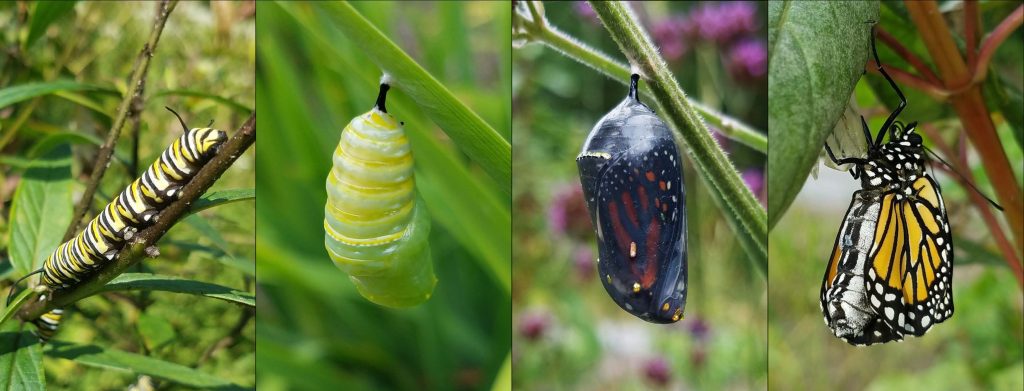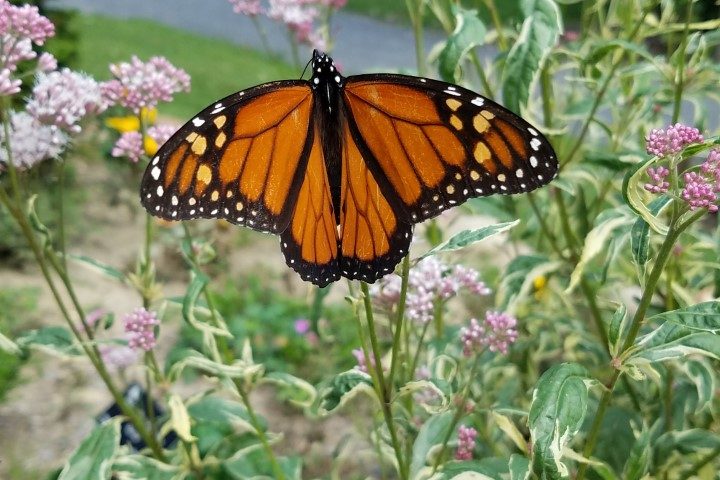By Kaitlyn Eichelberger
Since 1976, West Virginia has lost 90% of its state butterfly.
This summer, the International Union for Conservation of Nature (IUCN) designated the migratory monarch butterfly as endangered.
The monarch butterfly was chosen as West Virginia’s state butterfly in 1995, the legislative resolution stating that the monarch is “one of the most beautiful butterflies in the region” and noting the species abundance in the state. Much has changed since 1995, however, and the once-plentiful populations are facing a sharp decline.
The IUCN is an international organization made up of government, scientific and academic institutions. The IUCN’s Red List is a global record of the extinction risks of thousands of animals, fungi and plants. This information is used by government agencies, wildlife departments and other organizations to develop conservation plans and policies.
The monarch butterfly has a distinct appearance, bright orange with black stripes and white spots. Most notable, though, is their migration. Just like birds, monarch butterflies will complete a two-way migration from North America to South America. Over the course of multiple generations, monarchs travel from the United States and Canada to Mexico, mating and laying eggs along the way. This is the longest known migration of any insect.
“The migration of the monarch butterfly each year, from Mexico through the U.S. to Canada and back is truly a marvel of nature,” said West Virginia Botanic Garden (WVBG) member David Davis.

Many people may remember fall mornings spent watching these insects flutter through their yards or elementary school lessons about the monarch’s lifecycle. Aside from its title as West Virginia’s state butterfly, the monarch can also be considered a North American icon.
“In the fall, people would see bright orange beautiful butterflies in fields as they drove by,” said Sue Olcott, a wildlife biologist recently retired from the West Virginia Division of Natural Resources. “I think that phenomena just really captured people’s hearts and imagination and wonder.”
Monarchs are a part of many childhood memories, said Olcott. They’re an Appalachian cultural symbol.
Scientists have spent decades researching monarchs, making them one of the most highly studied insects. Through this research, scientists have recorded various threats to the species and subsequent population declines.
Monarchs face a variety of threats, including habitat loss, insecticides and climate change. In West Virginia, declining sources of milkweed is one of the main concerns. Milkweed is the monarch butterfly’s host plant, the only plant they lay their eggs on and the only food source for their larvae. Without milkweed, monarchs cannot survive.
West Virginia has three main milkweed species favored by monarchs: common milkweed, swamp milkweed and butterfly milkweed. These can be seen along roadsides and fields, but are growing less common due to urban and agricultural development, herbicides and extreme heat.
As described by the WVDNR, “Monarchs used to number in the billions. Since 1976, the world population of monarch butterflies has declined by 96%. West Virginia’s monarchs have dropped about 90%.”
Insect populations can be difficult to record, leading to a range of figures depending on the measurement method. The IUCN reports a decline between 22% and 72% over 10 years.
“So far this year, I have seen only a few adult monarchs at the [WVBG] and few to no larvae,” said Davis, noting that this may change as the summer progresses.
Despite the species’ addition to the IUCN’s Red List, monarch butterflies have not been added to the United States Endangered Species Act. The Endangered Species Act requires the protection of endangered species through government policy and recovery plans. Monarchs meet the criteria, but a lack of resources limits their listing.
The U.S. Fish and Wildlife Service stated, “adding the monarch butterfly to the list of threatened and endangered species is warranted,” but resources will be spent on higher priority needs. If the monarch still qualifies in 2024, the agency will reconsider listing the species.
“As part of the species status assessment and seeing the data, I think [the monarch butterfly] needs protection,” said Olcott. “I think federal regulations are needed.”
Although the IUCN listing will help raise awareness, it doesn’t impact government policies in the United States, said Olcott and Davis.
In the absence of protection laws for monarchs, scientists emphasize the importance of individual and organized conservation efforts.
Olcott suggested maintaining native plants, reducing or eliminating herbicide and insecticide use and spreading awareness about the issues facing monarch butterflies and other pollinators.
Conservation efforts are the most efficient when encompassing multiple species, Olcott said. Aim to protect pollinators as a whole, rather than a specific species.
At the WVBG, pollinator beds provide habitats and food sources for monarch caterpillars and butterflies. These efforts expand each year, Davis said. He starts new milkweed plants from seed and spread them throughout the garden.
Many organizations offer informational resources on supporting pollinators, including the Monarch Joint Venture, Pollinator Partnership and the Xerces Society for Invertebrate Conservation.
Alongside community and scientific efforts to protect this species, some scientists say the outlook for monarchs is uplifting. Insects reproduce quickly and populations grow rapidly when given the opportunity. Monarch butterflies are a widely-studied, well-loved species with many supporters.
“Nature is an amazing thing, and the monarch’s story is one of many,” said Davis. “We should do everything we can to help the monarchs and all of our native wildlife.”
TWEET @DominionPostWV




